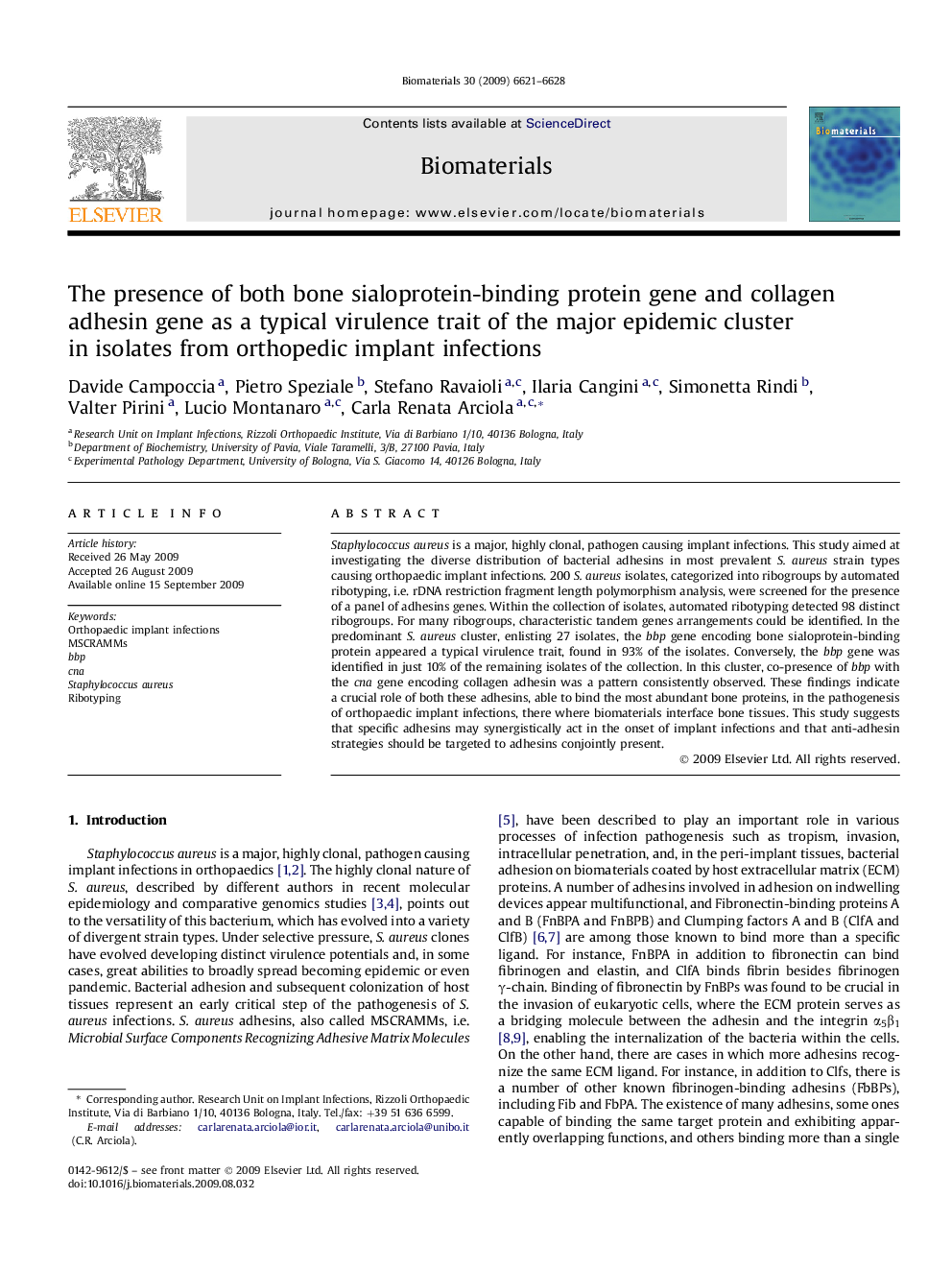| Article ID | Journal | Published Year | Pages | File Type |
|---|---|---|---|---|
| 10098 | Biomaterials | 2009 | 8 Pages |
Staphylococcus aureus is a major, highly clonal, pathogen causing implant infections. This study aimed at investigating the diverse distribution of bacterial adhesins in most prevalent S. aureus strain types causing orthopaedic implant infections. 200 S. aureus isolates, categorized into ribogroups by automated ribotyping, i.e. rDNA restriction fragment length polymorphism analysis, were screened for the presence of a panel of adhesins genes. Within the collection of isolates, automated ribotyping detected 98 distinct ribogroups. For many ribogroups, characteristic tandem genes arrangements could be identified. In the predominant S. aureus cluster, enlisting 27 isolates, the bbp gene encoding bone sialoprotein-binding protein appeared a typical virulence trait, found in 93% of the isolates. Conversely, the bbp gene was identified in just 10% of the remaining isolates of the collection. In this cluster, co-presence of bbp with the cna gene encoding collagen adhesin was a pattern consistently observed. These findings indicate a crucial role of both these adhesins, able to bind the most abundant bone proteins, in the pathogenesis of orthopaedic implant infections, there where biomaterials interface bone tissues. This study suggests that specific adhesins may synergistically act in the onset of implant infections and that anti-adhesin strategies should be targeted to adhesins conjointly present.
